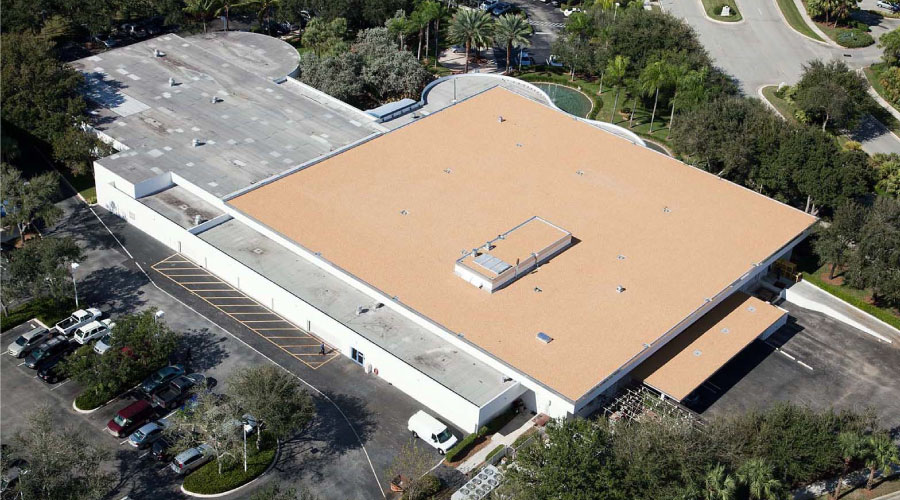Resilient Roof Systems Can Be Designed To Handle Higher Wind Speeds Than Codes Require
A resilient roof system can be designed for a wind speed higher than code requires for the location of the building. Adding 10 or even 20 mph to the design wind speed will increase the design loads. Subsequently, designing and installing a roof to withstand the increased design loads can result in a roof system that will be more capable of resisting high winds. Roof edges are the critical component for roof system resiliency. The roofing industry knows that most roof system blow-offs start at corners and perimeters. This is why increased fastening is always required in these locations. Roof system wind resistance includes well-fastened and rigid edge metal or parapet caps. Adding a well-fastened and weatherproofed termination bar close to the edge metal or parapet is an inexpensive, secondary measure that can significantly increase the wind resistance and provide roof resiliency. The addition of a termination bar helps keep a roof on the building during strong winds by helping to prevent a progressive failure if the edge metal or parapet cap is blown off.
Depending on the type of storm, debris or hail may be issues for the roof system. Impacts can puncture a roof membrane, creating locations for leaks. The tougher the substrate directly beneath the membrane, the more impact-resistant the membrane will be. A durable, tough cover board — above the insulation, below the membrane — helps prevent damage caused by the impact from debris and hail. A cover board also acts as a thermal break for mechanically attached insulation and provides toughness for "everyday" foot traffic during maintenance of the roof and rooftop equipment.
In addition to simply keeping the roof in place, there are ways a roof can facilitate continued use by employees or residents after a severe weather event and also keep the occupants more comfortable and productive.
Roof's Role In Comfort
Roof insulation and roof surface color play important roles in occupancy comfort after a storm when the power is out. An insulation layer with high R-value means less transfer of heat and energy into or out of a building; therefore a more suitable interior temperature can be maintained. Using multiple layers of insulation and eliminating thermal bridges help maintain the high R-value of the thermal layer. The roofing industry is aware that using a single layer of insulation with metal fasteners and metal plates will reduce the R-value of a roof by approximately 15 percent. Proper design and installation of the thermal layer should always be the minimum expectation.
A roof's color determines if the sun's energy is reflected or absorbed. Location, climate, building height relative to footprint, building use, and conditioning of a building (e.g., heated only) will help determine the most appropriate roof color choice for resiliency. Roof color becomes less important to occupancy comfort as the amount of insulation increases. For example, a dark colored roof with an R-value of 10 would allow less heat transfer if a white or light-colored coating is applied, likely increasing occupancy comfort. While less heat transfer is beneficial during cooling seasons, it may not be beneficial during heating seasons. If an existing roof has a high R-value (e.g., 25 or 30), the effect of roof color is moderated. Unfortunately, we can't predict if a potentially debilitating storm will happen in winter or summer.
Related Topics:













